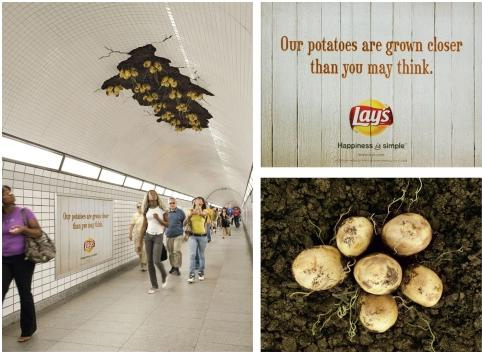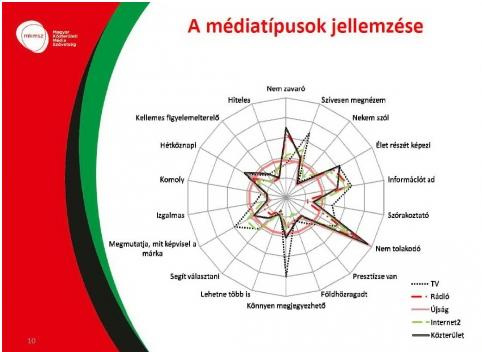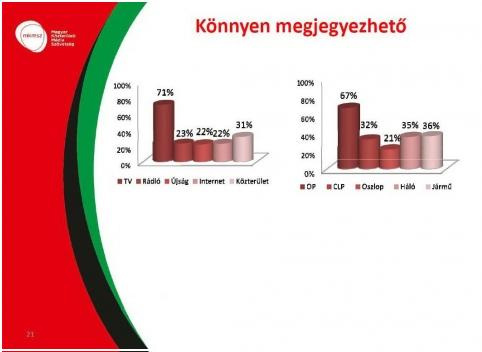It wasn’t concealed, that the professional conference which was held by MKMSZ on Thursday at the Palace of Arts was intended to polish the outdoor advertising. It is also emerged: the media agencies can evaluate their media plans according to new criteria. Interesting elements are also appeared in front of the projector.
The professional conference of the Hungarian Outdoor Media Association was held with strong interest on Thursday which could have several reasons: first of all, because the event was with free entrance, on the other hand, the outdoor media is underrepresented among the types of the media conferences line-up.
According to promise of the organizers this situation will change, because they want to make a tradition of similar initiatives in the life of the association. Furthermore, in one these events of the Palace of Arts halls, in spite of the several seats many participants forced to stand and in praise of the event, this situation was maintained even after the lunch.
During the conference three main topics were discussed, or four, but about the pony has been already written a lot, it was the last – even if during the last week’s event Gergely Litka summed up humorously the slightly embarrassing story of the horse.
It is not goodas it is
There is nothing so good as it is, especially the outdoor market’s current situation, the connection between certain elements of the communication’s chain and the “out of home – ooh” advertising segment should be changed. At least Tamás Bauer, the managing director of Portland optimizer and Tamás Jobbágy, the head of MEC ResearchDivisiontalked about this.
From their presentation revealed that today in the head of advertisers outdoor media does not enough sexy,moreover, the relationship between certain actors of outdoor advertising market is far from working well together. The relationship between the four main characters, between the advertisers and creative agencies, media agencies, and outdoor optimizer generally not integrated, the actors are in isolation contact with each otherwhich does not allowthe efficient utilization of the creative possibilities inherent in the different types of media. This coupled with the fact which is probably characterized not only by the outdoor media that the advertisers cut off the amount intended for creativity from marketing budget at first.
But there is a lot of potential in the out of home advertising – added the two performers. As the result of their research prepared for the conference shows that customers like the outdoor media because they consider it as type of media that stimulate to creative thinking, and if the product portfolio and advertising support each other well,it can be a very powerful media type.However, advertisers and agencies do not see enough trendy the outdoor media, moreover, the participants of the survey also criticized some of the its disadvantagesas emerged a rather dubious reputation of the media type thanks to the issue of illegal billboards.
According to Bauer and Jobbágy from the current situation it is possible to move forward if advertisers and agenciesas well as the optimizer are sitting at one table to develop the campaign process. In the fact, that outdoor advertisement is not enough sexy, especially the spread of the digital out of home media may change, which according to the performers, neither in the West assumed significant proportions, but in the future it is clear that outdoor advertisement will become next to the traditional three screens (TV, computers and mobile phones), the fourth digital interface.
This must be added to the purification of the market as the bad quality or uncertain background billboards will be demolished – anyway, this process has already started, at least according to Miklos Somogyi, the President of MKMSZ.
The second theme pursued the suggestion of Bauers: as the outdoor media is plenty of creative potential. Ervin Sallai, the co-creative director of Creative Café and Katalin Spielmann, the media director of Coca-Cola Hungary also tried to prove it. Sallai approached the question from an absolute creative side, showing such impressive ambient as the award-winning nose hair cutter advertisement in Cannes this year or as the outdoor advertisement with live fishes or just as the potato solution of Lay’s.

Spielmann inkább marketinges szemmel, kutatásokkal alátámasztva mutatott be főként hazai termékbevezető kampányokat, mint például a Coke Zero hazai megjelenése, vagy az Enviga zöldtea bevezetése, melyről a kampány idején print lapszámunkban is említést tettünk.
Spielmann rather with the eyes of marketing presented the mainly domestic product launches campaigns supported by researchessuch as the domestic appearance of Coke Zeroor the introduction of Enviga green tea which was also mentioned by our print issue during the campaign.
Itis good,as it is
The third mainstream of the conference was the research which was presented by the managerial staffs of Ipsos, by Peter Sterk, president and by Bálint Hantos, the head of the outdoor researches and also managing director of Outdoor Media Audit. These studies mainly highlighted that the outdoor is good, but they tried also to give details of why and for what it is.
In July, Ipsos examined the attitudes towards outdoor advertising for MKMSZ in the framework of an online query where 800 people were selected from the population aged over 15 and inthe questionnaires the advertisements of each type of media were evaluated from several aspects by the responding individuals and separately also the advertisements of the outdoor media.

According to the one of themainstatement of the research’s results, the biggest strenght of the outdoor media is that it is the least disruptive and intrusive media type (people think that the television advertisements are the most intrusive form of advertising).Anadditional strength is that it is part of everyday life of the people, which reduce the rejection of advertising.
Among its disadvantagesshould be highlighted the lack of credibility and it doesn’t provide sufficient information,so it does not contribute to decision making,because (especially today) it can be talked about a static type of media so the transfer of information is substantially more difficult than in case of the TV or the Internet.

Furthermore, the most highly memorable ads are the television commercials which – although far behind – is followed by the outdoor media. Among the tools of outdoor media, the easiest to remember is the billboard advertising.The presentation showed also that the low-skilled, under the 50 years of age, low social status people are subjected to the most of the outdoor advertising.
One of the most interesting part of research was the so-called Penalty & Reward analysis. Its essence was to determine if a multi-media campaign which runs what kind of effect – suppress or amplifier – have on the results of specific media types. In the perception of outdoor advertising, for example, the analysis showed that the television is essential to a good campaign, TV advertising can add a lot to the perception of outdoor campaigns but it can also harm if there isn’t any TV support.
It can be seen also from theidentification ofoutdooradvertisements that the identification values of a campaign can improvea lot using television advertising and lose without the help ofthe campaign. The research allows a lot of similar comparisons of indicators, so it includes also the metric of activation in which the radio can mostly work well together with outdoor media. According to the research, the outdoor ads in practice are able to reinforce all the main indicators of the other media types with success.
The possibility of a new kind of media planning is definitely interesting in the light of the current model. After the presentation of the research there was no reaction and question.
We are wondering how the media agencies will use this methodology which is certainly related to much more work and attention.
Szabolcs Szerényi
Source:kreatív.online
According to promise of the organizers this situation will change, because they want to make a tradition of similar initiatives in the life of the association. Furthermore, in one these events of the Palace of Arts halls, in spite of the several seats many participants forced to stand and in praise of the event, this situation was maintained even after the lunch. During the conference three main topics were discussed, or four, but about the pony has been already written a lot, it was the last – even if during the last week’s event Gergely Keresési javaslat: a közterület alulreprezentált a médiatípusok közül a konferencia palettán.
Írjon be szöveget, adjon meg webhelycímet vagy fordítson le egy dokumentumot.
Mégse
magyar-angol fordítás
Litka summed up humorously the slightly embarrassing story of the horse.






